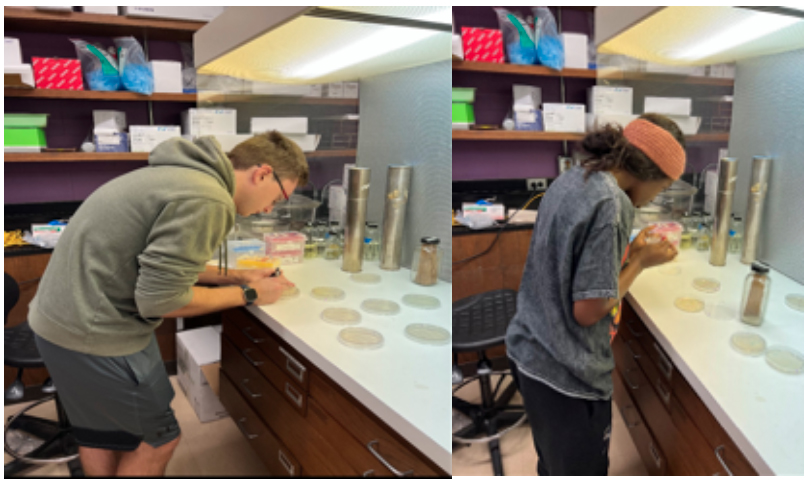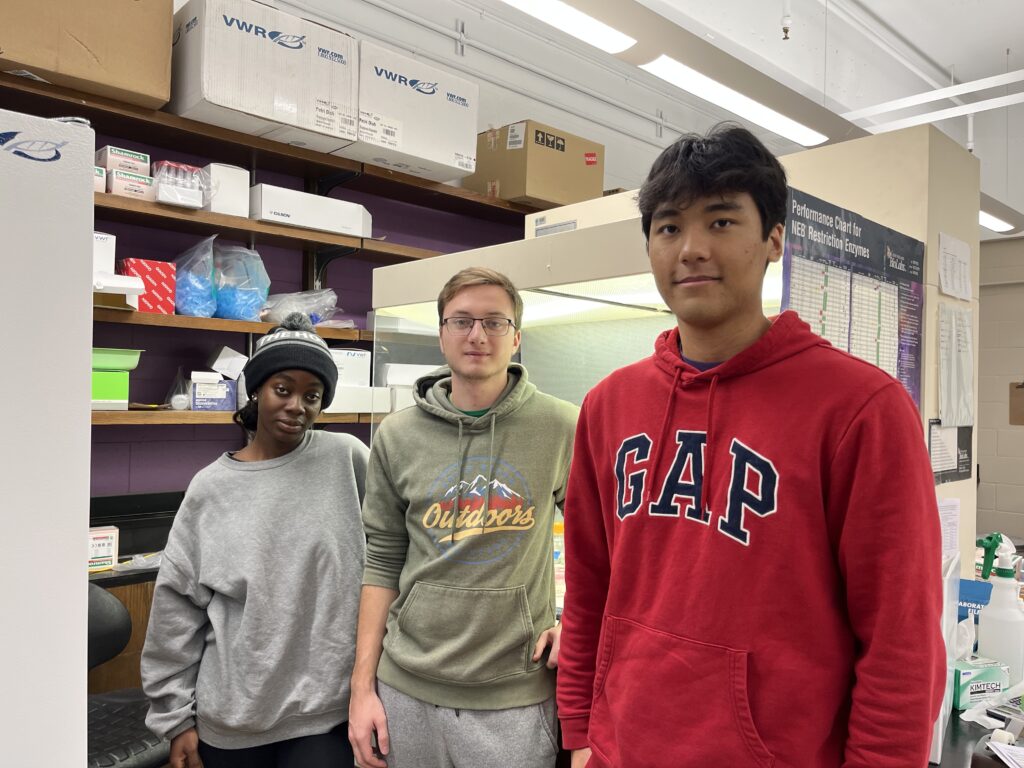Zhelah Guzeh. Losel Baro, and Nikita Damyan
Introduction
We were selected for the Bacteria and Disease research stream at Minnesota State University Mankato, led by Dr. Yongtao Zhu. The purpose of our stream is to delete the sprB gene using the pBDG02 plasmid in Flavobacterium psychrophilum that causes bacterial cold-water disease in salmonoid fish. In order to achieve this goal, we have gone through procedures to go through the first and second DNA recombinations in order to delete the sprB gene and run a colony PCR as a confirmation that sprB was deleted.
Specific content
For the past few months, we have successfully completed a series of procedures which include transformation/ co-transformation, conjugation, streaking on erythromycin plates, streaking on sucrose plates, transferring colonies from sucrose plate to TYES plates, performing colony PCR, and running a colony PCR gel. For this blog, we will focus on the purpose of streaking colonies on both erythromycin and sucrose plates and transferring colonies to TYES.

After performing experiments allowing the second round of DNA recombination, we streaked the same colonies on both erythromycin and sucrose plates. This process was done to confirm whether the deletion of the sprB gene using our pBDG02 plasmid was successful. We expect more growth on the sucrose plate. If there’s more growth on the erythromycin plate than the sucrose, that means we didn’t lose the plasmid, but if we have more growth on sucrose than erythromycin, that means we successfully got rid of the plasmid due to the second recombination. We were able to confirm that we got rid of the plasmid after this lab by the observation that many colonies failed to grow on erythromycin plates. Losing the plasmid is the prerequisite to obtaining gene deletion mutants. We transferred the colonies that failed to grow on erythromycin from the sucrose plates onto the TYES plates. The TYES is a growing medium that was used to maintain more growth.

After these plating procedures we did PCR on the colonies that did not grow on erythromycin plates, as those were the bacteria that may lack sprB, and then ran a gel to confirm we had mutants lacking this gene. We confirmed that the sprB gene was deleted.
During these lab periods we got to experience seeing the first and second of DNA recombination happen. We felt that these labs were some of the most impactful procedures we’ve had to go through so far as the gene we have been trying to remove from the chromosome for almost a year, was finally deleted. We did not run into too many problems during these labs. In the future, we plan on doing a complementation where we put sprB back into our mutant and run experiments on the differences between bacteria with and without sprB.

